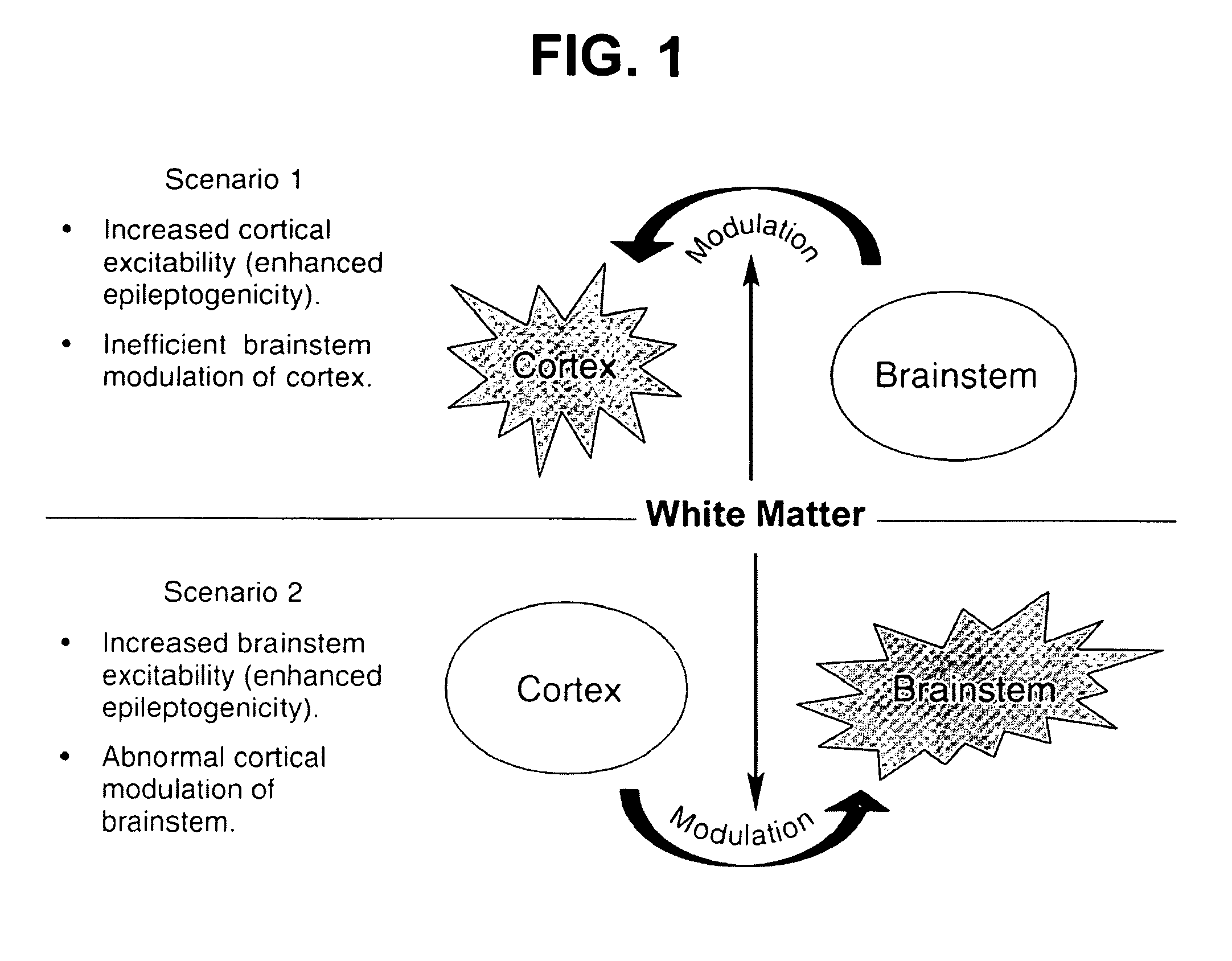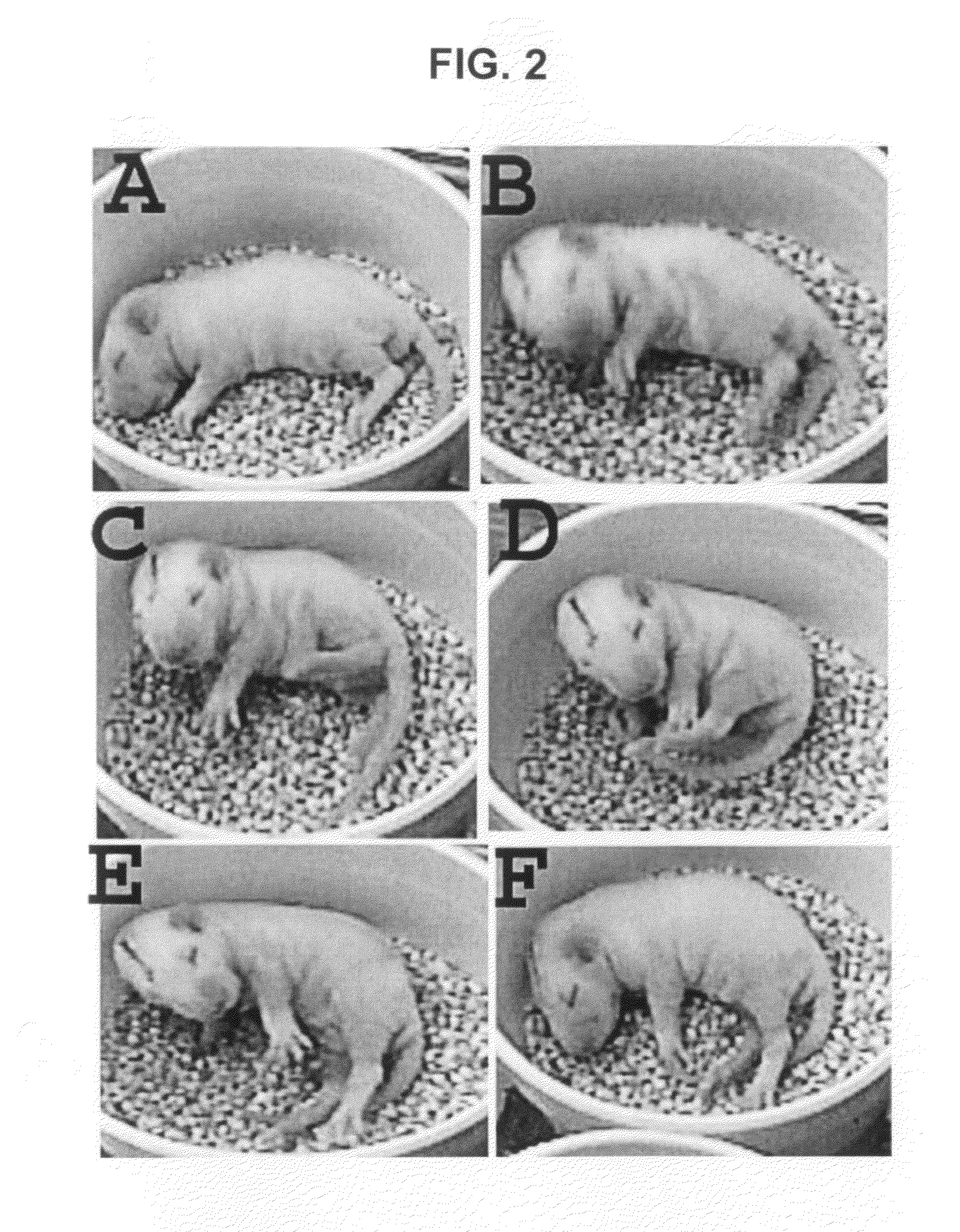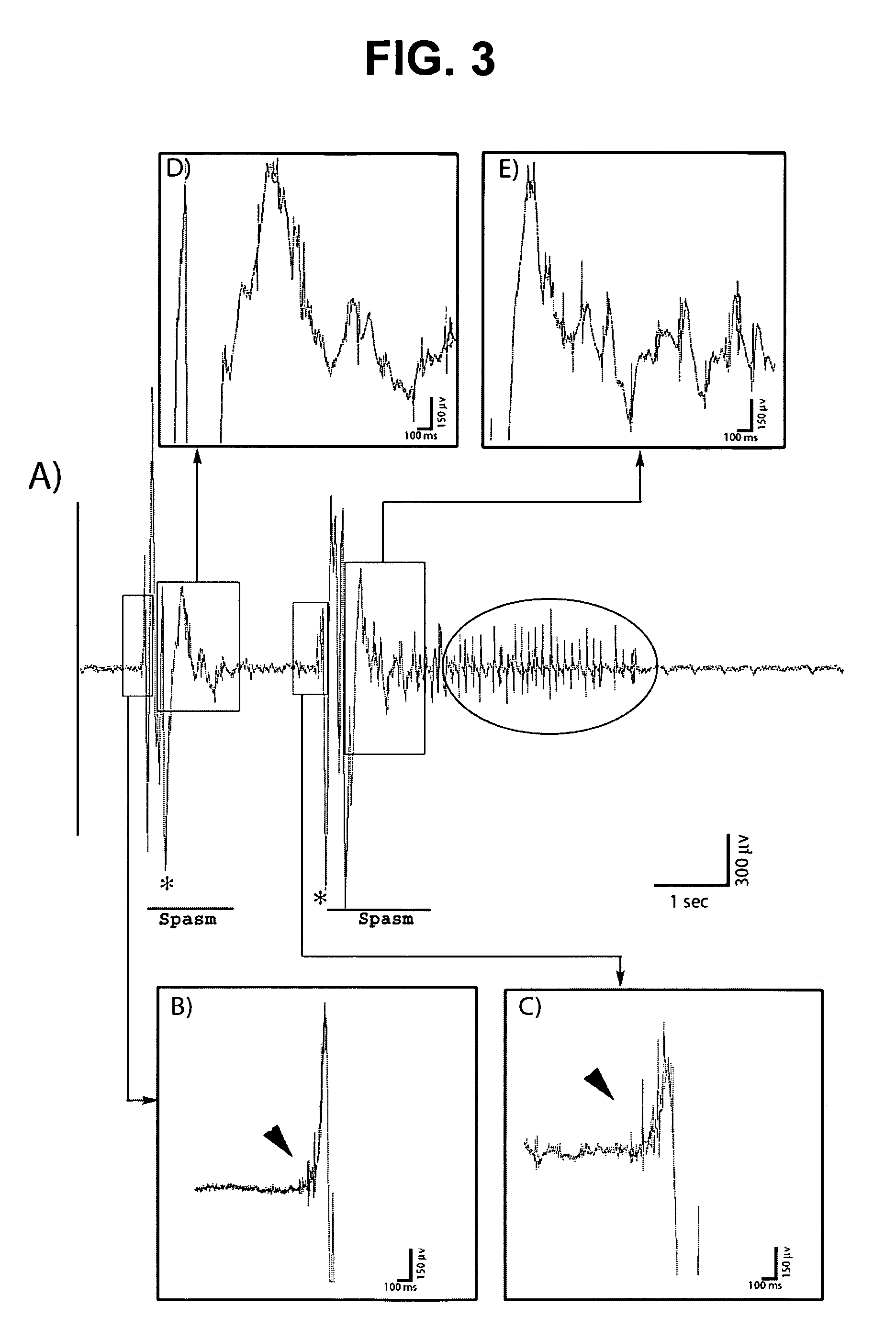Model of infantile spasm syndrome
a technology of infantile spasm and model, which is applied in the field of animal models of human diseases, can solve the problems of high mortality rate, cognitive deficit persisting, and not often controlled by conventional methods
- Summary
- Abstract
- Description
- Claims
- Application Information
AI Technical Summary
Benefits of technology
Problems solved by technology
Method used
Image
Examples
example 1
Development of an Animal Model for Infantile Spasms
[0051]Evidence is provided suggesting the creation of a new model of symptomatic IS in infant rats. The model fulfills at least two of the criteria suggested by the workshop: recurrent spasms over several days associated with ictal seizure discharges resembling in part the EEG features seen in humans including electrodecremental-like responses. Furthermore, similar to the clinical situation, the spasms persist for a specific period of time from P7 to P11-12. As the spasms disappear, several pups go on to develop other spontaneous seizures manifesting as behavioral arrest and secondarily generalized limbic seizures (Racine et al., 1973; McNamara, 1984; Bertram and Cornett, 1993; Haas et al., 1990).
[0052]In creating the model, the necessary substrates for the expression of IS were evaluated. There are several hypotheses based on anatomical, functional and biochemical abnormalities that are sometimes observed in patients with IS. There...
example 2
Dose Titration and Epidural EEG
[0067]Titration of doses of agents used to induce spasms. Because the time course of the spasms appears to correlate with the time course of the PCPA effect on serotonin (Rattray et al., 1996), five pups were injected with PCPA only; none of those pups developed spasms. To further identify the best combination of doses (DOX, LPS and PCPA) that would result in low mortality but permit for the maximal expression of the spasms, the volume of the intracerebral injections was initially reduced while maintaining the same concentrations: P3 pups were injected with DOX (1 μg / g, 4 μl instead of 5 μl) and LPS (1 μg / g, 3 μL instead of 7 μL). The dose of PCPA was also adjusted to 150 mg / kg i.p. (instead of 300 mg / kg) given at P5 because serotonin is known to decrease sucking in rat pups (Spear and Ristine, 1982; Ristine and Spear, 1984); this may impact survival. Spasms were observed in 8 / 13 (62%) of pups between the ages of P7 to P12. Four of those pups died at P...
PUM
 Login to View More
Login to View More Abstract
Description
Claims
Application Information
 Login to View More
Login to View More - R&D
- Intellectual Property
- Life Sciences
- Materials
- Tech Scout
- Unparalleled Data Quality
- Higher Quality Content
- 60% Fewer Hallucinations
Browse by: Latest US Patents, China's latest patents, Technical Efficacy Thesaurus, Application Domain, Technology Topic, Popular Technical Reports.
© 2025 PatSnap. All rights reserved.Legal|Privacy policy|Modern Slavery Act Transparency Statement|Sitemap|About US| Contact US: help@patsnap.com



